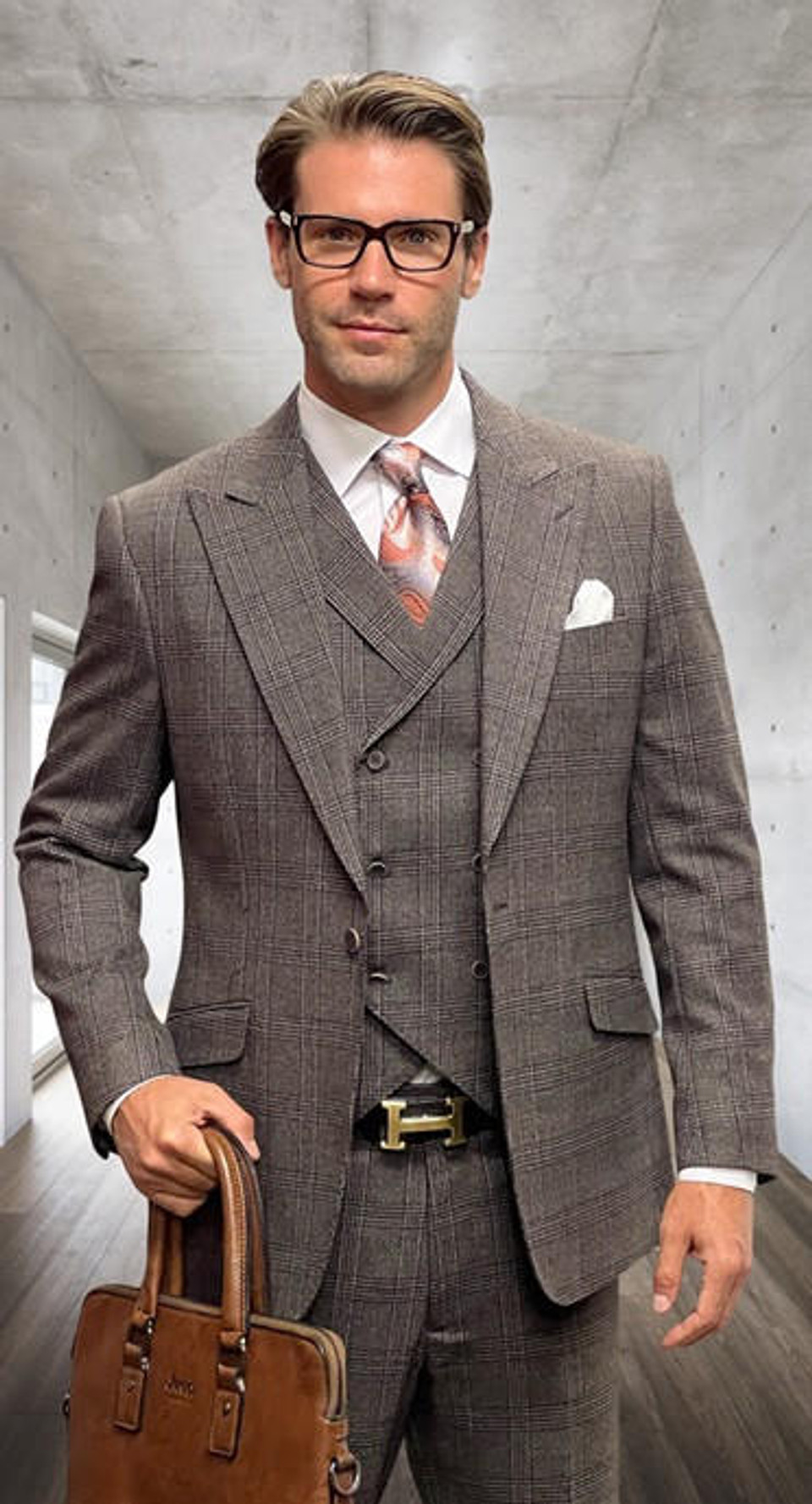Dec 28, 2024
The History of Double Breasted Suits and Why They're Still Relevant
Origins of the Double-Breasted Suit
Double breasted suits are a hallmark of sophistication and power, that can trace its roots back to naval attire of the 17th and 18th centuries. The style began as a functional element of the pea coat, a short, double-breasted jacket worn by sailors to shield against harsh sea winds. The benefit of the overlapping front panels and dual rows of buttons provided added warmth and protection for the sailors wearing it, making it practical and durable.
However, the iconic double breasted suit as we recognize it today owes much of its popularity to King Edward VII of England. Known for his impeccable style and influence on men’s fashion, Edward embraced the double-breasted jacket as a casual alternative to more formal tailcoats in the late 19th century. He often wore the jacket with wide lapels and bold patterns, creating a look that was both relaxed and commanding. Edward’s sartorial choices revolutionized menswear, cementing the double-breasted suit as a staple in a gentleman’s wardrobe.
This royal endorsement not only elevated the double-breasted suit but also set a standard for elegance that resonated across Europe and beyond. Edward’s influence on menswear earned him a reputation as one of history’s most stylish monarchs, and his love for double-breasted tailoring left an indelible mark on fashion. The influence is no different than when Celebrities of today are seen wearing a new style, that it becomes an instant fashion trend. If you want to become an expert, why not read our article: Things you should know about double breasted suits here.
The Evolution of Style
As the double-breasted suit gained traction, it evolved to suit the tastes of different eras. In the 1920s and 1930s, the style became synonymous with Hollywood glamour, worn by leading men such as Clark Gable and Cary Grant. During this time, the suits featured broader shoulders, nipped waists, and wide lapels, emphasizing a V-shaped silhouette that exuded strength and masculinity.
The 1980s saw a resurgence in the look, with designers embracing exaggerated proportions and power dressing. During this time you would notice wider shoulders on the jacket with a closed back, meaning that there are no side vents. Business professionals and Wall Street executives favored the look for its commanding presence, making it a symbol of ambition and success. Think of the Wall Street movie Gordon Gekko and you get the general idea.
Modern Relevance
Despite its ups and downs in popularity, the style has never truly disappeared. Today, designers have reinvented the style for our modern tastes, offering slimmer cuts, softer fabrics, and minimalist details that appeal to a new generation of fashion enthusiasts. The suit’s inherent versatility allows it to transition seamlessly from boardrooms to red carpets, ensuring its enduring relevance.
Key Takeaways
- Royal Endorsement: King Edward VII played a pivotal role in popularizing the double-breasted suit, transforming it from naval wear to a symbol of elegance.
- Timeless Design: The overlapping front panels and peaked lapels have remained consistent elements, adapting to different eras and trends.
- Modern Revival: Contemporary designers have updated the double-breasted suit with sleek silhouettes and innovative fabrics, making it a versatile choice for today’s wardrobe.
- Enduring Appeal: Whether worn by Hollywood icons or business executives, the double-breasted suit continues to convey confidence, power, and style.
Conclusion
The double-breasted suit is more than just a fashion trend—it’s a testament to the enduring appeal of classic menswear. From its naval origins to its royal endorsement by King Edward VII, the style has evolved to meet the demands of modern fashion while retaining its timeless charm. Whether you’re stepping into a boardroom or attending a black-tie event, the double-breasted suit remains a go-to choice for those who want to look their best with a touch of historical flair.




